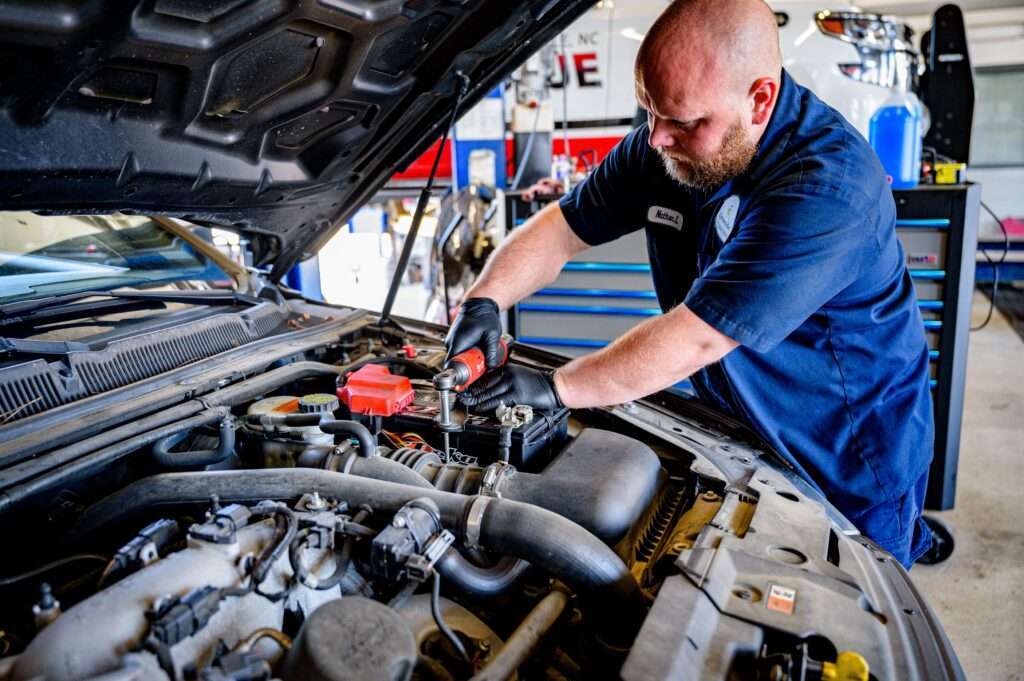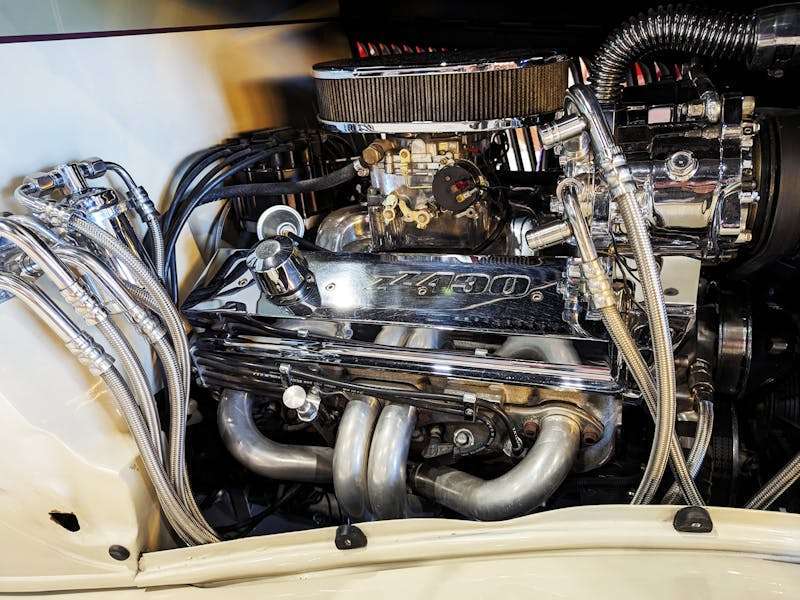Your vehicle’s fuel system upgrade unlocks its true potential by enhancing performance. This upgrade optimizes the engine’s efficiency and increases both power and fuel economy simultaneously.
Upgrading your vehicle fuel system comes with a range of benefits that go beyond mere performance improvements. For example, reduced emissions and extended engine life.
Importance of upgrading fuel system for performance enhancements.
Upgrading the fuel system is crucial for maximizing engine performance. A well-functioning fuel system is essential for achieving optimal horsepower and torque. By ensuring that your engine receives enough fuel, you can boost its power and support its performance needs.
Improving throttle response and acceleration are two key benefits of upgrading your vehicle’s fuel system. When the fuel system is upgraded, it can deliver fuel at a faster rate, reducing any potential bottlenecks that may hinder performance. This allows for quicker response times and enhanced acceleration, giving you a thrilling driving experience.
Enhancing the fuel system not only improves performance but also prevents engine misfires and improves overall reliability. When an engine doesn’t receive enough fuel, it can lead to starvation and damage over time. Upgrading the fuel system ensures that your engine gets the necessary amount of fuel without any interruptions or inconsistencies.
Exploring options for fuel system upgrades.
Some of the options worth exploring during a fuel system upgrade include high-flow pumps, aftermarket injectors and fuel rail upgrades.
- Aftermarket injectors.
Upgrade your factory fuel injectors with high-performance aftermarket ones. These injectors deliver a higher volume of fuel to the engine, resulting in improved power and efficiency.
- High-flow pumps.
Replace the stock fuel pump with a high-flow alternative. These pumps provide better fuel delivery, ensuring a consistent supply of gasoline to the engine even under demanding conditions.
- Complete fuel rail upgrades.
Upgrade your entire fuel rail system for enhanced performance. This option includes replacing the stock components with higher-capacity rails, regulators, and fittings, allowing for increased fuel flow and pressure.
- Research different brands and models.
Look into various options available in the market. Compare features, specifications, and customer reviews to identify reputable brands that offer reliable solutions.
- Consult with experts or mechanics.
Seek advice from professionals who specialize in automotive upgrades. They can assess your vehicle’s requirements and recommend the most suitable upgrade option based on your goals and budget.
You will optimize its performance while ensuring efficient fuel delivery to support demanding engines by upgrading your vehicle’s fuel system. Explore these options, conduct thorough research, and consult with experts to make an informed decision about your ideal fuel system upgrade solution.
Understanding the technical process of upgrading the fuel system.

Upgrading your vehicle’s fuel system involves various technical aspects that are essential for a successful modification. This article will provide insights into the process, from installing new components to making necessary adjustments.
1. Installing new injectors, pumps, or regulators.
When upgrading your fuel system, one crucial step is installing new injectors, pumps, or regulators. These components play a vital role in ensuring proper fuel delivery and performance. Here’s what you need to know:
Selecting the right size and type of injectors based on your vehicle’s requirements is crucial. Proper installation techniques such as cleaning the injector seats and applying lubrication are important.
When replacing the fuel pump, ensure compatibility with your vehicle’s power demands. Upgrading regulators can help maintain consistent fuel pressure for optimal performance.
2. Modifications required for fuel rail assembly.
In some cases, upgrading the entire fuel rail assembly may be necessary. This modification enhances fuel flow and supports higher horsepower outputs. Consider the following:
- Increasing fuel line diameter.
A larger diameter allows greater fuel volume to reach the engine.
- Adding additional injectors.
Supplementing existing injectors with extra ones can accommodate higher power demands.
- Utilizing aftermarket fuel rails.
These offer improved flow characteristics and increased durability.
3. Tuning adjustments after upgrade completion.
After completing a fuel system upgrade, tuning adjustments become critical to optimize performance and prevent potential issues. Here’s what you should keep in mind:
Consult with an experienced tuner who can recalibrate air-fuel ratios and ignition timing for optimal results.
Fine-tuning may involve adjusting parameters such as injector pulse width or duty cycle. Regular monitoring of engine parameters using diagnostic tools helps identify any required tweaks.
Factors to consider when choosing the right fuel system upgrade.
When choosing a fuel system upgrade, there are several factors you need to consider to ensure you make the right choice for your vehicle. Here are some key points to keep in mind:
1. Compatibility, performance goals, and budget.
Take into account the compatibility of the upgrade with your vehicle’s existing components. Ensure that it is designed to work seamlessly with your engine and other parts of the fuel system.
Consider your performance goals. Are you looking for improved horsepower, better fuel efficiency, or enhanced acceleration? Different upgrades may cater to specific performance objectives.
Evaluate your budget before making a decision. Some upgrades can be pricey, so it’s essential to determine how much you’re willing to invest in enhancing your fuel system.
2. Basic or advanced modification.
Assess whether a basic or advanced level of modification suits your requirements best. A basic upgrade may involve simple changes like replacing filters or injectors, while an advanced modification could include installing a new fuel pump or upgrading the entire system.
Keep in mind that more extensive modifications may require professional installation and expertise, which could add additional costs.
3. Supporting modifications.
Determine if any supporting modifications are necessary alongside the chosen upgrade option. For example, if you’re upgrading the fuel injectors, you might also need to consider upgrading the air intake system for optimal results.
Ensure that all components work harmoniously together for maximum efficiency and performance gains.
4. Long-term goals alignment.
Consider how well the chosen upgrade aligns with your long-term goals for your vehicle. If you plan on further modifications down the line, choose an upgrade that allows for future expansion and compatibility with other enhancements.
You will avoid potential conflicts or limitations in the future by selecting an upgrade that fits into your overall vision for your vehicle’s performance and capabilities.
Matching airflow and fuel upgrades.
To ensure optimal performance gains in your vehicle, it is crucial to strike a proper balance between airflow upgrades and fuel system enhancements. By understanding the importance of matching these upgrades, you can avoid potential issues such as running too rich or lean.
One key aspect is upgrading the intake and exhaust systems to improve airflow. Aftermarket options like air intake kits and exhaust systems can significantly enhance the amount of air entering and exiting the engine. These upgrades allow for better combustion, resulting in increased power output.
However, it’s essential to remember that increased airflow requires a corresponding upgrade in the fuel system. Upgrading components such as fuel injectors, fuel rails, or even adjusting the fuel pressure through a map-clamp ensures an adequate supply of fuel to match the increased air intake. This synchronization prevents misfires and maintains a proper air-to-fuel ratio.
When considering fuel system upgrades, it’s important to determine the appropriate amount of fuel required for maximum performance without overdoing it. Upgraded injectors with higher flow rates can deliver more fuel efficiently while maintaining control over its delivery. This allows for precise tuning and adjustment according to your specific needs.
By ensuring a balance between upgraded airflow components and matching fuel system enhancements, you can achieve optimal results from your vehicle’s performance upgrades. Whether you’re looking for improved horsepower or torque gains, synchronizing these two aspects will help maximize your driving experience.
Fuel system upgrades cost considerations.
Considering a fuel system upgrade? It’s important to evaluate the cost considerations before making a decision. Here are some key factors to keep in mind:
- Evaluate the cost-benefit ratio.
It’s crucial to weigh the costs against the potential benefits. Take into account factors such as improved performance and efficiency, which can lead to long-term savings.
- Factor in initial investment and installation costs.
Upgrading your fuel system involves an initial investment. Consider the upfront costs associated with purchasing new components or systems, as well as any expenses related to installation.
- Compare prices from different suppliers.
To find the best deal without compromising quality, compare prices from various suppliers. Look for reputable companies that offer competitive pricing on fuel system upgrade options.
- Consider overall value gained.
While cost is an important consideration, don’t overlook the overall value gained from upgrading your fuel system. Improved performance and efficiency can result in savings on fuel consumption and maintenance costs over time.
By carefully evaluating these cost considerations, you can make an informed decision. Remember to weigh the cost-benefit ratio, factor in initial investment and installation costs, compare prices from different suppliers, and consider the overall value gained from improved performance and efficiency.
Benefits of upgrading your vehicle’s fuel system.
Some of the benefits of upgrading your vehicle’s fuel system include an increase in horsepower, torque, improved throttle response and acceleration and combustion efficiency.
- Optimizing fuel delivery and combustion efficiency.
By optimizing fuel delivery and combustion efficiency, you can experience an impressive boost in horsepower, torque, and overall engine performance. Whether you’re looking for a bit more oomph on the highway or seeking that extra edge on the racetrack, a fuel system upgrade can give your vehicle the power it needs.
- Enhanced throttle response and acceleration.
Not only will upgrading your fuel system improve your car’s performance, but it will also enhance throttle response and acceleration. Say goodbye to sluggish starts and hello to instant power at your command. With improved throttle response, merging onto highways becomes effortless, making every journey a joyride.
- Better fuel economy.
But it doesn’t stop there – upgrading your fuel system can also lead to better fuel economy. By optimizing how fuel is delivered and burned within your engine, you can maximize its efficiency. This means fewer trips to the gas station and more money saved in the long run.
- Minimized risk of engine misfires.
In addition to these benefits, upgrading your vehicle’s fuel system ensures reliable operation by minimizing the risk of engine misfires or other troublesome issues. A well-functioning fuel system keeps everything running smoothly under the hood so that you can focus on enjoying the ride without any unexpected hiccups along the way.

